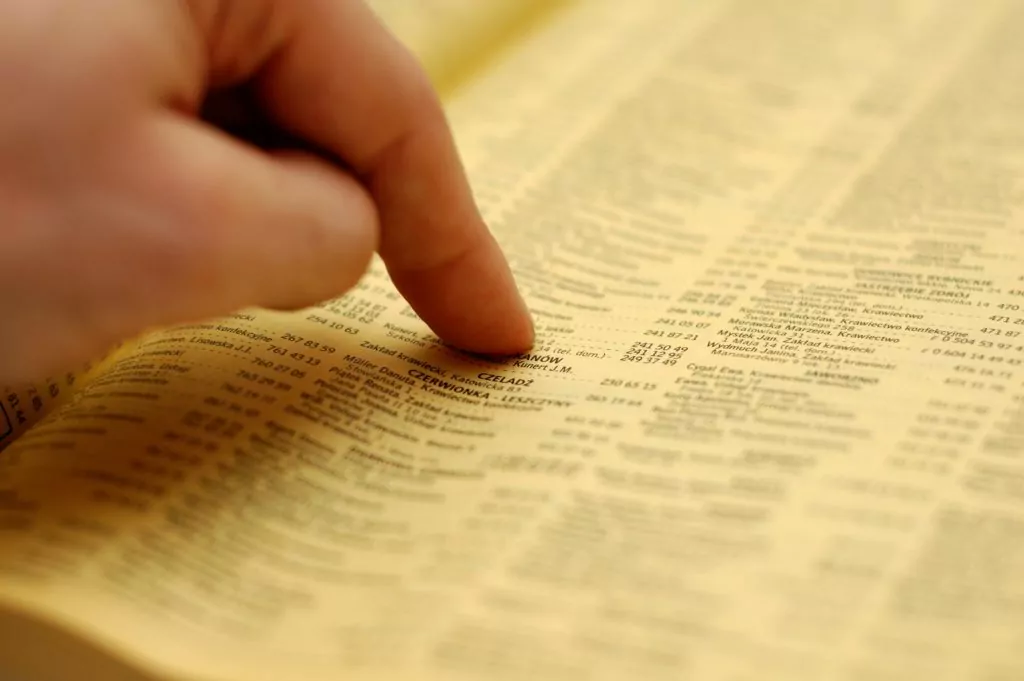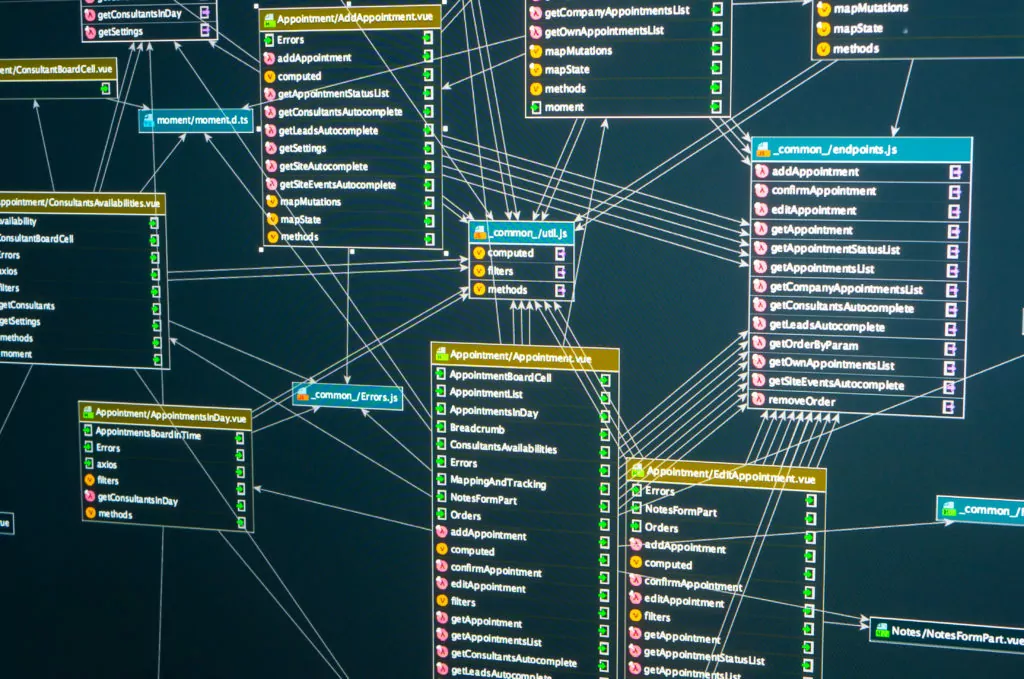Here’s everything about computerized databases.
Whether you know it or not, you have already used one.
So if you want to know what a computerized database is, then you are in the right place.
Let’s dive right in!
- Numbers like 69, 1337, 420 Etc? Online Number Meanings
- ICT Manager Meaning & Roles?
- Digital Information Technology: Meaning?
- Techno Functional: Meaning?
- ASCII: What Is ASCII & What Is ASCII Used For?
- SPOF: What Is a Single Point of Failure?
- Divide and Conquer Strategy: How to Use?

Computerized Database 101
If you’ve ever bought a plane ticket online or booked a hotel through an app, you’ve used a computerized database.
A computerized database is a collection of information that’s organized and accessible through a computer.
Computerized databases have access to users’ information while allowing its users to find and retrieve files in a much simpler manner than older, manual databases.
If you’ve ever seen a warehouse using a manual database, you know how much more efficient a computerized database is.
The Basics of a Computerized Database
A computerized database is a collection of data compiled on a computer to increase the efficiency with which you can access, retrieve, and organize data.
Computerized databases consist of fields, records, and files.
Fields are the actual data sets stored in a database. These include things like transaction amounts, names, dates, and any other form of data.
A field represents an attribute of some current event, thing, or person. On a table, this data appears in columns so you can easily view and understand it.
Records are the related attributes of a set of data that shows itself in a table. Records are the rows on a table.
Records consist of fields and can include more than one sort of data. A record represents one whole entity while a field is describing just one piece of data.
Files are groups of related records.
A file is the whole data set, including all associated records and fields.
Records in a file always have a primary key that allows you to differentiate one from one another.
Computerized Database vs. Manual Database
Manual databases were the only means of tracking information before the 1960s and introducing the first computerized databases.
Manual and digital databases consist of the same necessary data, records, and fields but differ in how users can find information.
If we use a phonebook as an example, the whole of the phonebook is the file.
A record is an identifying factor in a database. In this case, that’s the last name.
The first name, number, and address are the fields or the information stored in the database.
You can think of a phonebook in both the manual and computerized sense.
A physical phonebook is a non-computerized database—it allows you to search through and find the information you want, but you can only use it when the physical phonebook is with you.

The main difference between the two storage methods is the fact that manual databases are stored on paper.
Using a manual database versus a computerized database means you won’t have the same easy access to the information.
Computerized Database Examples
You can find computerized databases in almost all fields of work in the 21st century.
Computerized databases are just so much more efficient at storing and retrieving data than manual databases are.
Here are some computerized database examples, so you know how you can use them:
Airlines
When you book a flight, whether you’re doing so through an airline’s website or a flight aggregator, the website is using computerized databases to retrieve various fields. These include departure and arrival dates and locations, seat placement, price, and other fields.
Computerized databases allow airlines to track the demand for their product. By knowing the average demand for their product, airlines can better react to fluctuations.
Changes in demand might occur due to holidays, and computerized databases can help the airline react faster.
Banks
In the past, banks had all of their data stored in non-computerized databases, but since the advent of modern computers, banks have been increasingly using computerized databases.
One common place computerized databases appear is in ATMs.
ATMs need the ability to retrieve and display information quickly. The data divides into different fields, like checking and savings accounts, but other fields like transactions and loans too.
The primary key for your bank is your account number, and they use it to recognize what file you’re accessing.
Colleges
Colleges have to compile vast amounts of data on their students, staff, and donors.
Computerized databases can have many different files, like those for individual students or whole classes. Such files allow the college to track student performance and other attributes.
Colleges use computerized databases to track everything from tuition payments to grade point averages.
By using computerized databases for such a wide variety of problems, colleges have an abundance of data at their fingertips.
Colleges can use that data to increase student wellbeing, create more popular classes, and in some cases, reduce tuition costs.
Online Retailers
Online retailers rely on computerized databases to track their order fulfillment.
When a company receives an order and payment, the order gets put into a computerized database that tracks where the product is in the supply chain.

Whether the product is still being produced or is on its way to the customer, a computerized database will be able to convey that info to both the client and management.
Better organization can create more cohesion between the different parts of a workforce and make deliveries more efficient.
Database Management Systems
Computerized databases were introduced in 1963 when Charles Bachman invented integrated data storage (IDS). IDS was the first database management system.
IDS used navigational databases, or a database management system (DBMS), where records are discoverable using their relationship to other records or fields.
An example could be an order sheet. With a navigational database, you can find all orders from one client or all product orders.
Navigational databases are an older system, so four DBMS types are now in common usage—relational, hierarchical, network, and object-oriented databases. There’s also what’s known as non-relational databases, which are ideal for large data sets.
Relational Databases
Relational databases (RDB) are collections of data sets that are organized by relations to one another.
Either the record or field or both will relate to another in the data set. Four possible relations could occur—one to one, one to many, many to one, and many to many.
Each of these potential relations is used to find information, like specific data and its attributes.
RDB are useful because they are secure and can easily be modified to include new data sets.
Hierarchical Databases
A hierarchical database is organized via the central record to which all other records and fields are related.
Essentially, this means one record will relate to another record and all its fields. The original record is the primary record, while the secondary records are all related to it, but not each other.
Each corresponding record relates in some way to the primary record. You can think about it as a tree.
The trunk is the primary record, out of which other records can be found.
Hierarchical databases are an older database method, so it has its limitations, especially when you have a wide variety of records.
Network Databases
Network databases allow their users to form multiple relations between primary and secondary records.
In contrast to hierarchical databases, which can only have one primary record, network databases can have numerous primary selections.
Network databases form a web or network in which all the different records relate to everything else in the database.

The web of relations allows for a less rigid way of organizing data.
In the real world, data sometimes misses the connections between things, but network databases attempt to fill that gap.
Object-Oriented Databases
Object-oriented databases (OODB) represent data as objects, a technical term denoting a definite data set that can be referenced later without delving into its fields or specific attributes.
Essentially, all the parts in an object come together to form a single data set.
OODB is not the most common form of databases due to the complicated way the data is stored.
You can do almost all of the same things with network databases without having to form objects.
Non-Relational Databases
Non-relational databases don’t use the same method of records and fields that relational databases use.
Non-relational databases, like those used by search engines and social media platforms, form unique frameworks to store and retrieve data.
Non-relational databases are useful when the amount of information you need to process is too much for relational databases to handle.
Non-relational databases offer versatility because they are specifically designed to memorize data and display it when prompted.
Advantages and Disadvantages of a Computerized Database
Deciding whether you want to incorporate a computerized database into your operations depends on how much efficiency a database system can create for you.
Here are some common computerized database advantages and disadvantages:
Computerized Database Advantages:
- Reduced time spent on data entry and retrieval
- Reduced costs of data storage
- Reduced errors and redundancy
- Data is independent of other application programs
- Increased consistency
- Scalable, or can easily expand to include new data
Computerized Database Disadvantages:
- Staff requires training to learn to navigate the system
- Start-up costs, both in software and hardware
- Conversion costs from manual to computerized databases
- If the database stops working or is damaged, all data within the system is compromised
- Potential for data leaks if users ignore proper security protocols

